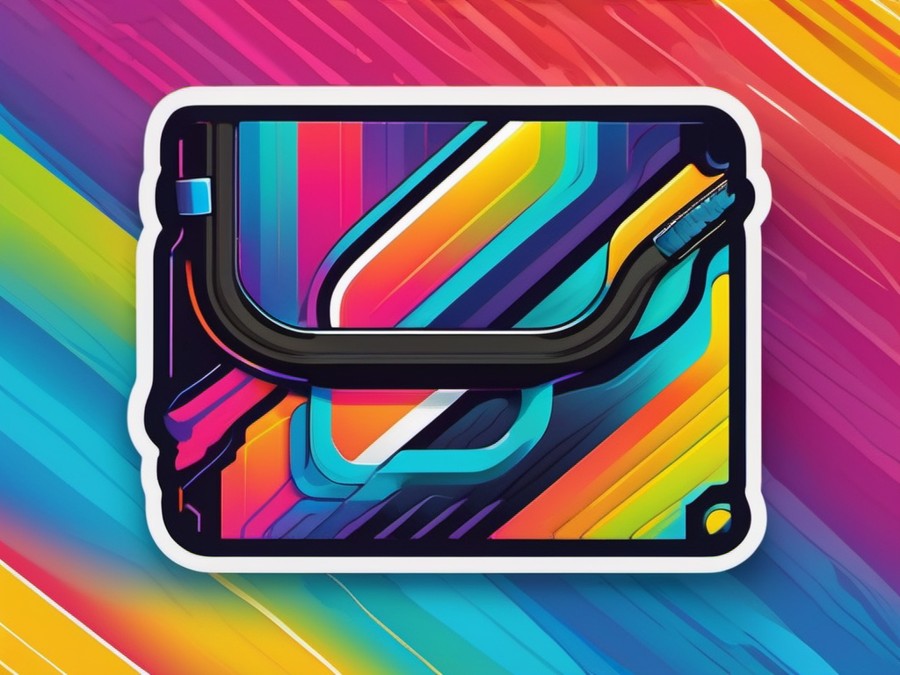· Charlotte Will · Projector Accessories · 7 min read
What is the Importance of a High-Quality HDMI Cable for Projectors?
Discover why investing in a high-quality HDMI cable is crucial for your projector setup. Learn about the importance of cable standards, bandwidth, and shielding to ensure optimal picture quality and future-proof your home theater.

When setting up your dream home theater, you might think that any old HDMI cable will do the job. After all, they all look pretty much the same, right? Wrong! The importance of a high-quality HDMI cable for projectors cannot be overstated. In this article, we’ll dive deep into why investing in a top-notch HDMI cable can make or break your viewing experience.
Introduction to HDMI Cables and Projectors
Understanding HDMI Standards
HDMI (High-Definition Multimedia Interface) cables have evolved significantly since their inception. You’ll find a variety of standards, including High-Speed and Standard cables. High-Speed cables are designed to support the latest features like 4K resolution, HDR (High Dynamic Range), and even 8K content. In contrast, Standard cables are more basic and may not support these advanced features, potentially limiting your projector’s capabilities.
How HDMI Works with Projectors
HDMI cables serve as the lifeline between your projector and source devices, transmitting both audio and video signals. Unlike older analog cables, HDMI supports digital transmission, which results in better picture quality and less signal degradation over longer distances.
To maximize your projector’s potential, you need to ensure that the HDMI cable can handle the bandwidth and speed required for modern content. This is where understanding HDMI standards becomes crucial.
The Role of HDMI Cables in Enhancing Video Quality
Resolution and Bandwidth
One of the primary reasons to invest in a high-quality HDMI cable is its ability to handle higher resolutions and bandwidths. HDMI 2.0 cables support up to 18 Gbps (gigabits per second), which is more than enough for 4K at 60 Hz. However, if you’re into the latest and greatest, consider HDMI 2.1 cables, which offer up to 48 Gbps, supporting 8K resolutions and higher refresh rates.
Impact of Signal Loss on Picture Quality
Signal loss is a real concern with HDMI cables, especially over longer distances. A cheap HDMI cable might suffer from signal degradation, leading to poor picture quality, artifacts, or even no signal at all. High-quality cables are designed with better shielding and materials to minimize signal loss, ensuring that the picture you see is as good as it can be.
For more on how HDMI works, check out our article What is an HDMI Cable and How Does It Work?.
Why Cheap HDMI Cables Can Ruin Your Viewing Experience
Inferior Materials and Poor Construction
Cheap HDMI cables often skimp on materials and construction quality. They might use inferior insulation, poor-quality connectors, or lack adequate shielding. These factors can lead to signal interference and degradation, which is the last thing you want when trying to enjoy a movie night with your family.
Gold-Plated Connectors: Myth or Reality?
You might have come across HDMI cables boasting about gold-plated connectors. While gold-plating does offer some advantages in terms of corrosion resistance, its primary benefit is marketing hype. The quality of the cable’s internal components and shielding matters more than the finish on its connectors.
Understanding Key Features of High-Quality HDMI Cables
Bandwidth and Speed Ratings
High-quality cables are clearly labeled with their bandwidth and speed ratings. This ensures that you know exactly what the cable is capable of handling. A high-speed rating guarantees support for modern features like 4K and HDR, making your investment future-proof.
Shielding and Durability
Shielding is critical for minimizing interference. High-quality cables use braided shielding or foil shielding to protect against electromagnetic interference (EMI) and radio frequency interference (RFI). Durable construction ensures that the cable can withstand regular use without fraying or breaking.
Additional Features: Ethernet, ARC (Audio Return Channel)
Premium HDMI cables often include additional features like Ethernet support, which allows you to connect your projector to the internet without needing a separate cable. ARC (Audio Return Channel) enables two-way audio transmission, making it easier to integrate your projector into a home theater system.
For more on the importance of cable management, see our article What is the Importance of Cable Management in Surveillance Camera Systems?.
Real-World Examples: How High-Quality Cables Make a Difference
Case Study: Upgrading to HDMI 2.1
A tech enthusiast upgraded his projector setup to include an HDMI 2.1 cable capable of supporting 8K content. The difference was immediately noticeable, with sharper images and smoother motion even in fast-paced action scenes.
Personal Anecdote: Noticing the Difference
I remember setting up my home theater with a cheap HDMI cable, only to be disappointed by the frequent signal drops and poor picture quality. After investing in a high-quality cable, everything changed—the picture was crystal clear, the colors were vivid, and I finally got the cinema experience I had been craving.
How to Choose the Right HDMI Cable for Your Projector
Assessing Your Needs: Resolution and Distance
Before buying an HDMI cable, assess your needs. What resolution are you aiming for? How far is the distance between your projector and source device? These factors will help you determine if you need an HDMI 2.0 or HDMI 2.1 cable.
Reading the Fine Print on Cable Packaging
Always read the fine print on cable packaging. Look for certifications and specifications that match your requirements. A quality HDMI cable will be clearly labeled with its capabilities, ensuring you make an informed purchase.
Common Misconceptions About HDMI Cables
Debunking the “All HDMI Cables are the Same” Myth
It’s a common misconception that all HDMI cables are the same. This couldn’t be further from the truth. As we’ve discussed, quality and features vary greatly between cables. Don’t fall into the trap of thinking that any old cable will do—it won’t!
The Role of Certifications and Standards
Certifications like HDMI Premium Certification ensure that the cable meets high standards for performance and reliability. Always look for certified cables to guarantee the best possible experience.
For more on the importance of quality in audio, check out our article What is a DAC and Why It’s Important for High-Quality Audio?.
Future-Proofing Your Projector Setup with High-Quality HDMI Cables
Anticipating Future Upgrades and Trends
Investing in a high-quality HDMI cable is not just about the here and now, but also about future-proofing your setup. As technology advances, you’ll want a cable that can handle the latest features and resolutions without needing an upgrade.
For more on high-speed Ethernet cables for gaming, see our article What is the Importance of High-Speed Ethernet Cables for Gaming?.
Conclusion
Investing in a high-quality HDMI cable for your projector is not just an option; it’s a necessity. Poor signal quality, interference, and degradation can ruin your viewing experience. By understanding the importance of cable standards, features like bandwidth and shielding, and the real-world benefits of quality cables, you can ensure that your projector setup delivers the best possible performance.
Don’t skimp on this crucial component of your home theater. The difference in quality and reliability is well worth the investment.
FAQs
What is the difference between HDMI and DisplayPort?
HDMI and DisplayPort are both popular interfaces for transmitting audio and video signals, but they have some differences. HDMI is more commonly used in consumer electronics, while DisplayPort is often found in professional and gaming setups. For more details, check out our article What is a DisplayPort to HDMI Cable Adapter?.
Can I use an old HDMI cable with a new projector?
While it might work, using an old HDMI cable with a new projector could limit its capabilities. Older cables may not support the latest features like 4K or HDR, which means you won’t be getting the most out of your new equipment.
What is the maximum length for an HDMI cable without signal loss?
The maximum length for an HDMI cable without significant signal loss varies depending on the quality of the cable and its shielding. High-quality cables can often transmit signals over longer distances without noticeable degradation. For optimal performance, keep the cable length under 50 feet.
Why do some HDMI cables have Ethernet capabilities?
HDMI cables with Ethernet capabilities allow you to connect your projector or other devices to the internet without needing a separate Ethernet cable. This feature is particularly useful in setups where minimizing cable clutter is important.
Can I use a cheap HDMI cable for casual viewing?
While you might get away with using a cheap HDMI cable for casual viewing, the quality will likely be subpar. Cheap cables often suffer from signal loss and interference, which can lead to a poor viewing experience. For the best results, even for casual use, it’s worth investing in a high-quality cable.
By understanding the importance of a high-quality HDMI cable for projectors, you can enhance your viewing experience and get the most out of your home theater setup. Don’t settle for less; invest in quality!




